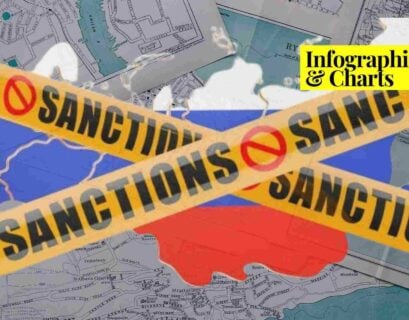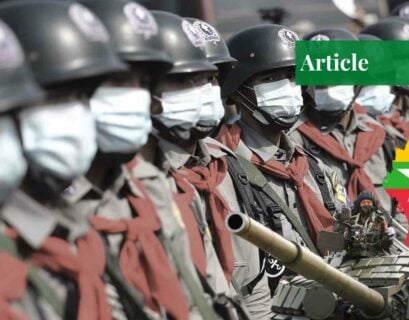Introduction
This research paper attempts to examine the root causes of the Rohingya crisis and tries to provide some solutions that can be applied with the help of various conflict resolution techniques. The paper is primarily based on qualitative methods like action research and narrative research.
Myanmar, a country in South-East Asia, since its independence has been struggling with ethnic issues and instability. The recent Myanmar coup of 1st February 2021, has resulted in human rights violations and the failure of democratic institutions in the country. As a result, the issue of the Rohingya people has once again gained attention with much uncertainty about Myanmar’s future.
The Rohingya are stateless people denied citizenship or any other legal documentation by the Burmese government. They are subjected to forced migration due to the government’s exclusion policies and referred to as the world’s most prosecuted minority. This ongoing conflict in the northern part of Myanmar qualifies as the world’s largest running civil war.
Historical Background
The history of the Rohingya conflict is inextricably linked with the history of Myanmar, a country that is ethnically diverse and consists of 135 officially recognized and few others (such as the Rohingyas) as unrecognized ethnic groups. Burma was colonized by the British in 1885 and achieved independence in 1948.
The effects of colonialism remain a significant part of Myanmar’s history and are blamed as the root cause of the country’s many problems. The colonial-era created divisions between Burmese, the majority ethnic group, and other minority ethnic groups, solidifying the separation and suspicion between the races which is evident from the fact that an element of every ethnic group in Myanmar has rebelled during the country’s history after its independence (Warzone Initiatives, 2015).
One such ethnic conflict of Myanmar is that of the Rohingya community whose forced migration and large displacement to Bangladesh has created a situation of crisis in the South Asia region. The Rohingyas are Sunni Muslims and claim themselves as descendants of Arab and Persian traders who settled in the north Arakan region in the 15th century, living together with the indigenous population for centuries.
The Arakan kingdom remained independent until 1784 when it was annexed by Burma’s king (Lewa, 2009). The Burmese government and Burmese historians, however, argue that the Rohingyas are actually Bengali Muslims and therefore refuse to recognize the term “Rohingya”. They claim that the Rohingya migrated to Rakhine state in Myanmar from Bengal during the British colonial era of 1824-1948 when Burma was part of British India.
However, most of the experts outside Myanmar do not agree with this claim of the Myanmar government and believe the Rohingyas to have been living in the region since the 15th or possibly the 7th century (Warzone Initiatives, 2015). The tensions and conflict started to emerge between the Burmese and Rohingyas when Burma was invaded by Japan in 1942; the Burmese nationalists attacked Muslim communities who they thought had benefited from British colonial rule.
In 1945, Britain liberated Burma from Japanese occupation with help of Burmese nationalists and Rohingya fighters. In 1947, some Rohingya leaders demanded the incorporation of the Arakan region into East Pakistan, now Bangladesh. It was this move that made the Myanmar government believe the Rohingyas to be a threat to the territorial integrity of the country.
After Burma achieved independence in 1948, it was renamed Myanmar and went through various changes. A coup in 1962 put the military in control of the government that played a prominent role in politics by implementing a unique form of socialism and self-imposed isolation. The military government justified their control particularly by the fear of foreign control over the country and thus advocated the strict military rule of government.
Later, in 2011, the military control ended and Myanmar became a republic with the National League for Democracy (NLD) coming into power, but this change in the political regime did not bring any visible changes in the policies towards the Rohingya community. The Rohingyas have had a history of exoduses and forced migration resulting from different Burmese government policies.
The 1974 Emergency Immigration Act required all citizens to carry an identity card called a National Registration Certificate, but the Rohingya were ineligible for these cards. They were only eligible for foreign registration cards which provided only limited rights and were meant for foreigners. Until 1982, the Rohingya enjoyed some degree of citizenship in Burma.
With the passage of the Citizenship Act in 1982, citizenship was revoked for the Rohingya community. The law created three tiers of citizenship and the Rohingya were excluded from all three, making them stateless. The government justified their move by claiming them as illegal immigrants from Bangladesh.
These two acts of exclusion have led to the large displacement of the Rohingya community from Myanmar. In 2014, the government conducted its first census in 30 years. On the census, there was no option to register as Rohingya, so the Rohingya had to register as “Bengali”, effectively forcing them to admit that they were immigrants from another country (Warzone Initiatives, 2015).
The Rohingyas had been allowed to register as temporary citizens and receive a white card, which provided them with limited rights, however, the government revoked their cards in February 2015. A report published by UN investigators in August 2018 accused Myanmar’s military of carrying out mass killings and rapes with “genocidal intent”.
Aung San Suu Kyi rejected the allegations of genocide when she appeared in court in December 2019. In January 2020, the court’s initial ruling ordered Myanmar to take emergency measures to protect the Rohingya from being persecuted and killed.
Actors and Their Demands
Unlike interstate wars wherein the actors are state governments, civil wars involve many new actors and institutions along with the state. Some of the main actors involved in Rohingya crisis are the following:
Rohingya Community
The Rohingyas are the Muslim minority community whose systematic discrimination is the main cause of conflict. From 1948 to 1961, the Rohingya Mujahideen group has fought military forces to gain autonomy, but in 1961, it lost its support. However, insurgent activities are still present in the region.
They have organized themselves into various militant groups such as the Rohingya Solidarity Organization (RSO) and the Arakan Rohingya Salvation Army (ARSA) that demand autonomy and different power distribution.
Myanmar and Its Communities
The Myanmar government fears that the ethnic group will destabilize the union of Myanmar and hence have adopted various exclusion policies towards the Rohingya community, forcing them to migrate in large numbers. A major player in the Rohingya crisis is the Buddhist nationalist group led by monks called 969. This group of monks is known for its anti-Muslim sentiment, and its aim is to protect Myanmar’s Buddhist society by targeting minority Muslims.
Although the international community has condemned the activities, the Myanmar government has done very little or nothing to restrain 969. The Rakhine community is a predominantly Buddhist community living in the Arakan region and is in direct conflict with Rohingyas with feelings of mistrust and hatred.
Islamist militant groups throughout South Asia have spoken against the discrimination of the Rohingya and spread anti-Buddhist messages, adding more fuel to the fears that Muslims will rise against the Myanmar government.
UN and the Nation States
Southeast Asian countries, especially Thailand, Bangladesh, Malaysia, India, and Indonesia, have been impacted by the influx of Rohingyas fleeing Myanmar and have had to, willingly or unwillingly, receive Rohingya refugees. According to the UN Human Rights Council, more than 768,000 Rohingyas have fled Myanmar. As Rohingyas speak Bengali, they first headed to Bangladesh.
Bangladesh authorities were lenient towards them and hosted a large number of refugees, but with the rising number of immigrants from Myanmar in 2012, they choose to stop all kinds of assistance and entry for the Rohingyas. This led Rohingyas to head towards countries like Thailand and Malaysia. Thailand, Malaysia, and Indonesia have adopted the policy to stop refugees’ entry by blocking all the entry points. With all the doors shut, the Rohingyas turned towards India.
The United Nations have tried to exert pressure on Myanmar’s government to improve its treatment of Rohingya by its agencies like the UN Human Rights Council and UN High Commission for Refugees that have worked towards repatriation of Rohingyas and access to refugees camps to observe their situation and human rights violations.
Causes of Conflict and Conflict Models
If one is to have any hope of reducing the occurrence of war and perhaps mitigating its severity and consequences, one must have a better understanding of the causes of the conflict. This is also because the Rohingya conflict is an ethnic civil war that involves various actors and also has a religious angle, as it can also be seen as a conflict between Buddhists and Muslims.
Since Rohingya Muslims are fighting for their identity in their own country, Myanmar, the Rohingya conflict can also be termed as identity war. The Rohingya conflict is considered an ongoing humanitarian crisis with notable spikes in 1978, 1992, 2015, 2016, and 2017. The reason for the escalation of the conflict in these years can be better understood by Kaufman’s model that emphasizes the emotions involved in ethnic conflict.
There are three preconditions: mythology, fear, and political opportunities to mobilize the myths for escalation to ethnic warfare (Kaufman, 2001). These preconditions in the context of the Rohingya crisis are:
- The Myanmar government believes that the Rohingyas are illegal immigrants and a threat to their country, and so there is a myth surrounding the Rohingya people that justifies the hostility between the ethnic groups, Rohingya Muslims and Rakhine Buddhists.
- The Rohingya Muslims feared a threat to their existence in their own country because they fail to receive any recognition from their state government. On the other hand, the Burmese are fearful of Muslim extremism taking root in Myanmar. Thus, the element of fear is present in both communities.
- The government has political opportunities to mobilize its myth and Rohingya Muslims’ threat perception by not granting them citizenship rights and any protection. This had also helped military government of Myanmar to justify its strict rule.
Let us now look at another conflict model, namely John Galtung’s model of conflict, violence and peace to understand the causes of the Rohingya conflict. The conflict could be viewed as a triangle with contradiction, attitude, and behaviour at its vertices (Galtung, 1969).
Here, the contradiction refers to the underlying conflict situation, which includes the actual or perceived incompatibility of goals between the conflict parties. In the case of the Rohingya conflict, the goal of Rohingya Muslims is to gain recognition from the government. However, the government is not interested in granting any rights to them.
Attitude includes the parties’ perceptions and misperceptions of each other and of themselves. The government of Myanmar believes that Rohingya Muslims are not citizens of Myanmar and have migrated from Bangladesh. The government of Myanmar saw them as a threat to national security because of their insurgent activities. The colonial era of the country is mainly seen as building these misperceptions and hatred in between both communities.
Behavior can involve cooperation or coercion gestures signifying conciliation or hostility. In this case, violent conflict behavior is characterized by threats, coercion, and destructive attacks. There are incidents of human rights violations and armed attacks in Rakhine, where hundreds of villages are now empty, many of them burned to the ground.
Galtung (1969) also made a distinction between direct violence, structural violence, and cultural violence. In the case of the Rohingya crisis, there are many instances of direct violence towards both communities, especially towards the Rohingya community. However, Myanmar’s military denies any wrongdoing.
Contrary to this, in 2012, some Rohingya Muslims were charged with gang rape and murder of a Buddhist woman in Rakhine, leading to clashes between the Rohingya Muslims and the Rakhine Buddhists. The tension between these two ethnic groups continues to be high and any minor dispute could lead to another eruption of violence, like the attack at the Bodh Gaya temple complex in Bihar in 2013 to avenge the atrocities against Rohingya Muslims in Myanmar.
For decades, Rohingya Muslims have faced a vicious cycle of structural violence in the form of persecution, discrimination, and violent repression. Many aid deliveries in Rakhine, including food and health care, have been suspended putting already people at even greater risk. Cultural violence simply means whatever blinds us to this or seeks to justify it (Galtung, 1969).
As the government denies any recognition to the Rohingya Muslims, the other groups such as the Rakhine Buddhists also cooperate with the government. Thus, we can see that the Rohingya conflict involves all of Galtung’s distinct acts of violence.
It is, however, possible to end direct violence by changing conflict behavior, structural violence by removing structural contradictions and injustices, and cultural violence by changing attitudes towards the Rohingya community. These responses relate to broader strategies of peacemaking and peacebuilding.
Conflict Resolution
In contemporary conflict resolution techniques, priority is given to managing and resolving conflict through mutual agreement (Ramsbotham et al., 2011). Unlike traditional ways, common emphasis is placed on refraining from the use of force. The same principle can be applied to resolve the Rohingya conflict that demands a long-term solution involving changes in the structural system of politics and belief. Some of the useful conflict resolution techniques are given below.
Approach to Have a Non-zero-sum Outcome
The main task of conflict resolution is to move from the zero-sum outcome, that is, defending own interests, to a non-zero-sum or positive outcome, that is to say, that the parties involved in a conflict are better off from the previous condition.
Since the Rohingya conflict is a multi-dimensional conflict and involves various actors, the positive approach can be achieved by negotiation that requires the willingness to make a compromise in initial positions to explore minimally acceptable outcomes. This approach conveys a view that conflict has to be treated as something to resolve, not to be won through an adversarial process.
Mediation
It is defined as a process in which an attempt is made to resolve conflict in presence of a third party. In the case of the Rohingya conflict, the international community, especially the UN, has acted as the third party in resolving the conflict. Various peace-keeping missions are active in Myanmar to strengthen democracy, human rights, and the reconciliation process.
In addition, other countries such as China, Bangladesh, and India have tried to facilitate reconciliation of the Rohingya community with the government of Myanmar and have helped to arrange better living conditions and security for Rohingyas settled in camps.
Problem-solving Workshops
As discussed earlier, the Rohingya conflict is an ethnic conflict that can be better resolved by a collaborative problem-solving process that can be utilized to overcome deep-seated mistrust and hatred. This can be done by making them aware of the instances from history when both Rakhine Buddhists and Rohingya Muslim community co-existed for many centuries.
This is evident from the fact that until World War II, the two communities did not show any sign of strong animosity (Lewa, 2009). This can also be done by the active participation of politicians like Aung San Suu Kyi and religious scholars who can preach that no religion allows such coercive acts.
Arbitration
The constitution of Myanmar requires arbitration as a conflict resolution mechanism and requires amendments and alterations to not only provide citizenship status but also generate religious, social, legal, and economic space for the recognition of basic human rights.
To fulfill this purpose, the Citizenship Law is in need of immediate modification of discriminatory policies against the Rohingya Muslims and other minorities in the region and accord them citizenship status to enable them to enjoy their fundamental rights in a civilized, democratic country.
Analysis
The Rohingya conflict demands immediate action because both parties are in a position of a Mutually Hurting Stalemate (Zartman, 2003). A Mutually Hurting Stalemate (MHS) is a ripe moment where parties involved in a conflict are in an uncomfortable and costly predicament.
According to our understanding, the Rohingya conflict needs to be resolved by cooperative methods that will lead to constructive results as experimented by Morton Deutsch. After discussing the whole idea, we can analyze that the main reason for the conflict is the mistrust between the government and ethnic groups.
This mistrust may be dispelled by adopting the Track Two Diplomacy approach (Montville, 2006). Deutsch (1983) proposed the “Deutsch’s Crude Law of Social Relations,“ whereby cooperation induces trust and belief. It can simply be defined as unofficial, non-structured interactions among the parties. In this approach, each party is optimistic about the other and both try hard to create a channel of trust among them.
Following this approach, the parties involved in the Rohingya conflict may get a forum like the Association of Southeast Asian Nations (ASEAN) to discuss the dispute and consider each other’s views to reach a mutually acceptable and beneficial peace agreement. In today’s time, media has also become a major tool to deescalate this conflict.
It has added pressure on the government and has raised international awareness about the stateless Rohingya group. There have been repatriation efforts taken in the years like August 1994 to March 1995, and July 2019 to August 2019 in order to resolve the Rohingya conflict.
However, all these efforts cannot do any better unless there is strict control over the violence by military organizations working on either side. The military’s involvement has led to the failure of agreements and talks between the Myanmar government and the Rohingya community.
Conclusion
History claims that the refugee crisis has served a pivotal purpose in leading the world towards instability and violence; the Rohingya conflict is no exception to this. The circumstances in Myanmar are snowballing enormously into a major humanitarian crisis and have begun to have ripple effects over the region.
The Rohingya crisis can end only if regional and global powers discover their roles not only as defenders of human rights but also as beneficiaries of the economic opportunities provided by a stable Myanmar. Moreover, there is a need to eliminate the vicious cycle of civil wars, unemployment, and poverty by providing education and basic necessities to its people.
References
- Deutsch, M. (1983). Conflict Resolution: Theory and Practice. Political Psychology, 4(3), 431-453. https://doi.org/10.2307/3790868
- Galtung, J. (1969). Violence, Peace, and Peace Research. Journal of Peace Research, 6(3), 167-191. https://www.jstor.org/stable/422690
- Kaufman, S. J. (2001). Modern Hatreds: The Symbolic Politics of Ethnic War (R. J. Art, R. Jervis, & S. M. Walt, Eds.). Cornell University Press. https://doi.org/10.7591/9781501702006-fm
- Lewa, C. (2009). North Arakan: an open prison for the Rohingya in Burma. Forced Migration Review, 32, 11-13. https://www.fmreview.org/statelessness/lewa
- Montville, J. V. (2006). Track Two Diplomacy: The Work of Healing History. The Whitehead Journal of Diplomacy and International Relations, 17(2), 15-25. https://blogs.shu.edu/journalofdiplomacy/files/archives/03Montville.pdf
- Ramsbotham, O., Woodhouse, T., & Miall, H. (Eds.). (2011). Contemporary Conflict Resolution. Polity Press.
- Warzone Initiatives. (2015, October). Rohingya Briefing Report.
- Zartman, I. W. (2003). The Timing of Peace Initiatives: Hurting Stalemates and Ripe Moments. The Global Review of Ethnopolitics, 1(1), 8-18. https://peacemaker.un.org/sites/peacemaker.un.org/files/TimingofPeaceInitiatives_Zartman2001.pdf
If you want to submit your articles and/or research papers, please check the Submissions page.
The views and opinions expressed in this article/paper are the author’s own and do not necessarily reflect the editorial position of Paradigm Shift.





















